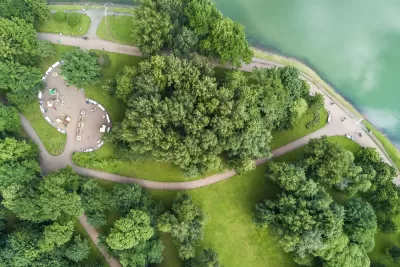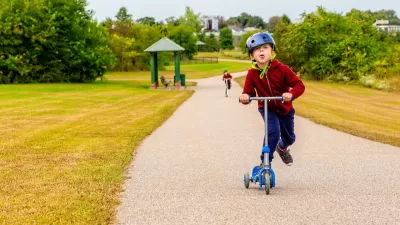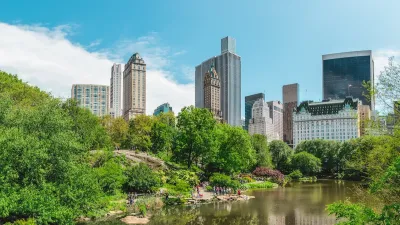Learn about the top trends impacting parks and recreation, including the use of mobile phone data to track park usage, impacts of climate change, rise of pickleball, a four-day work week, and more.

To plan for and meet the growing and diverse needs of communities, it is important to be aware of the latest trends. Within the field of parks and recreation, the National Recreation and Park Association (NRPA)'s Parks & Recreation magazine is the source that many turn to for up-to-date information. In this article, Richard J. Dolesh, NRPA’s retired Vice President of Strategic Initiatives and Editor at Large for Parks & Recreation magazine, tells readers about the trends that park and recreation professionals should pay attention to. Highlights include:
Technology
- Rise of artificial intelligence to perform tasks such as responding to the public, preparing speeches, summarizing meetings, preparing reports, counting visitors, monitoring building systems, planning new parks, etc.
- Use of mobile phone data to track and understand park usage.
Climate change
- The growing role of parks to address or mitigate the impacts of climate change, including mitigating urban heat-island effects, preventing destructive effects of stormwater and flooding, improving air quality in cities and densely populated urban areas, and enhancing community health, livability, and sustainability.
Workplace changes
- The idea of the four-day work week is gaining in popularity.
- While the COVID-19 pandemic may have led employers to allow and even encourage fully remote work, many are requiring staff to return to the office.
Recreation preferences
- Although the pandemic caused many people to spend more time in parks and walk outside, walking trips have actually declined nationwide.
- The rise of pickleball continues, with demand for new courts and the conversion of underutilized tennis courts is increasing.
- The need for facilities for cricket is growing, aided in part by the launch of Major League Cricket, a professional league that began play in July 2023.
For more information, please read the source article.
FULL STORY: Top Trends in Parks and Recreation for 2024

Study: Maui’s Plan to Convert Vacation Rentals to Long-Term Housing Could Cause Nearly $1 Billion Economic Loss
The plan would reduce visitor accommodation by 25,% resulting in 1,900 jobs lost.

North Texas Transit Leaders Tout Benefits of TOD for Growing Region
At a summit focused on transit-oriented development, policymakers discussed how North Texas’ expanded light rail system can serve as a tool for economic growth.

Using Old Oil and Gas Wells for Green Energy Storage
Penn State researchers have found that repurposing abandoned oil and gas wells for geothermal-assisted compressed-air energy storage can boost efficiency, reduce environmental risks, and support clean energy and job transitions.

Santa Barbara Could Build Housing on County Land
County supervisors moved forward a proposal to build workforce housing on two county-owned parcels.

San Mateo Formally Opposes Freeway Project
The city council will send a letter to Caltrans urging the agency to reconsider a plan to expand the 101 through the city of San Mateo.

A Bronx Community Fights to Have its Voice Heard
After organizing and giving input for decades, the community around the Kingsbridge Armory might actually see it redeveloped — and they want to continue to have a say in how it goes.
Urban Design for Planners 1: Software Tools
This six-course series explores essential urban design concepts using open source software and equips planners with the tools they need to participate fully in the urban design process.
Planning for Universal Design
Learn the tools for implementing Universal Design in planning regulations.
Ascent Environmental
Borough of Carlisle
Institute for Housing and Urban Development Studies (IHS)
City of Grandview
Harvard GSD Executive Education
Toledo-Lucas County Plan Commissions
Salt Lake City
NYU Wagner Graduate School of Public Service





























